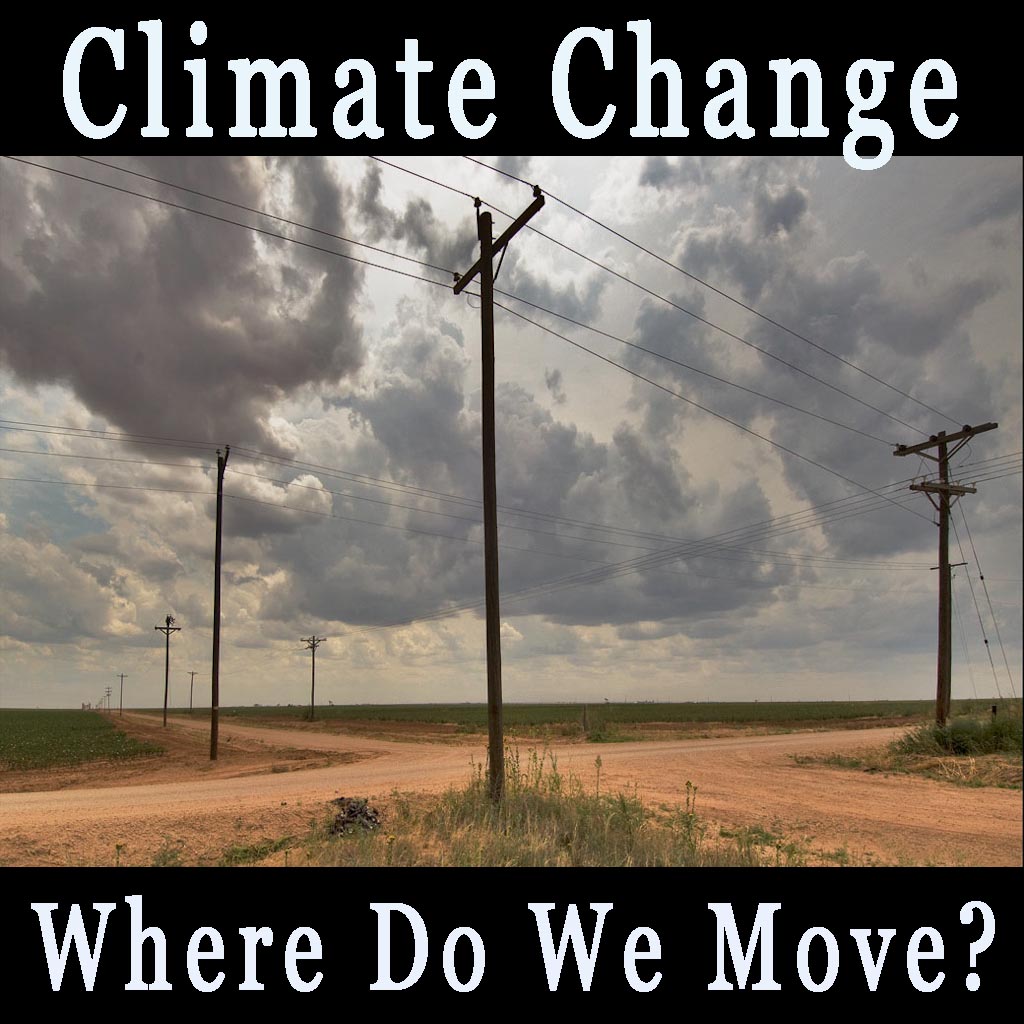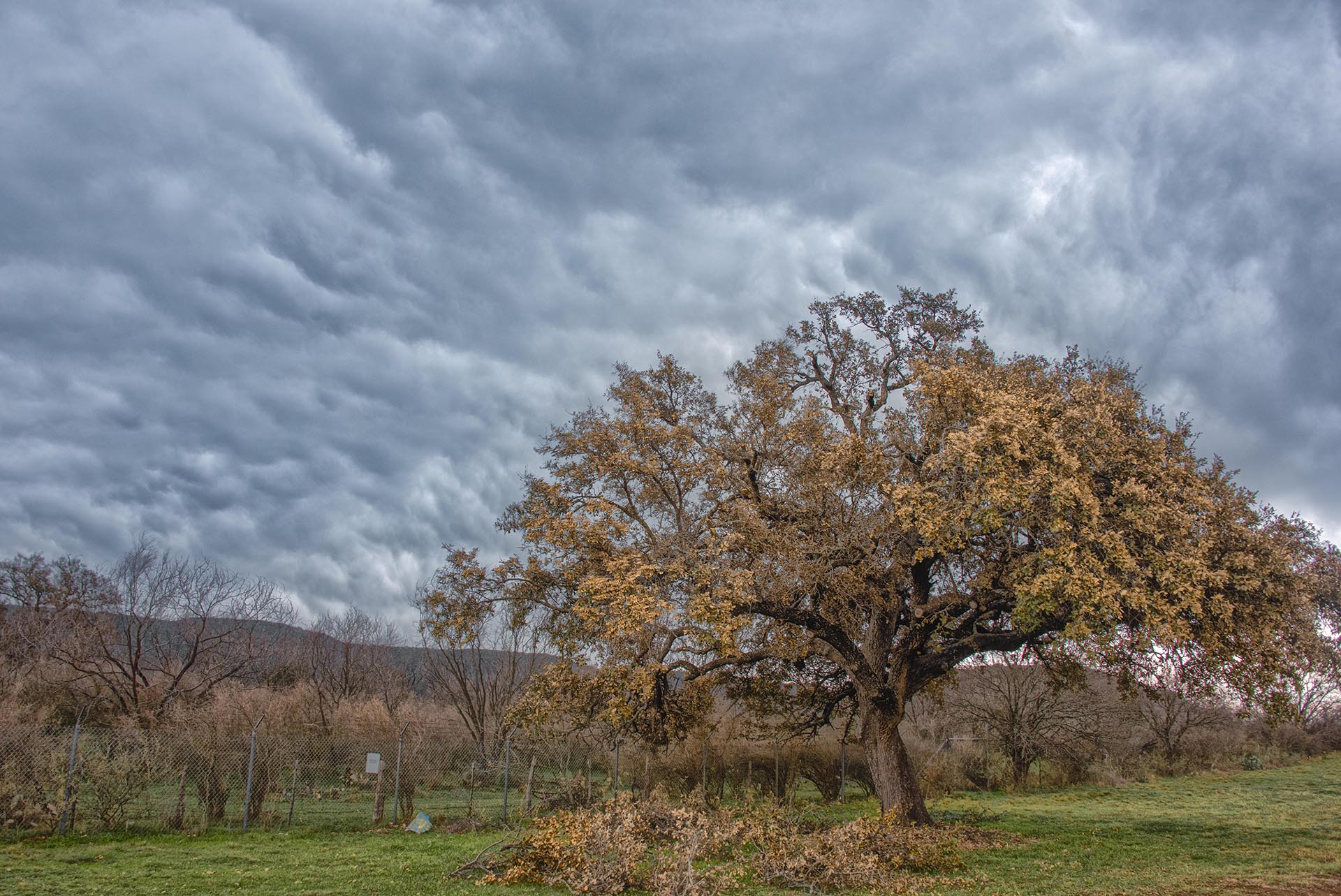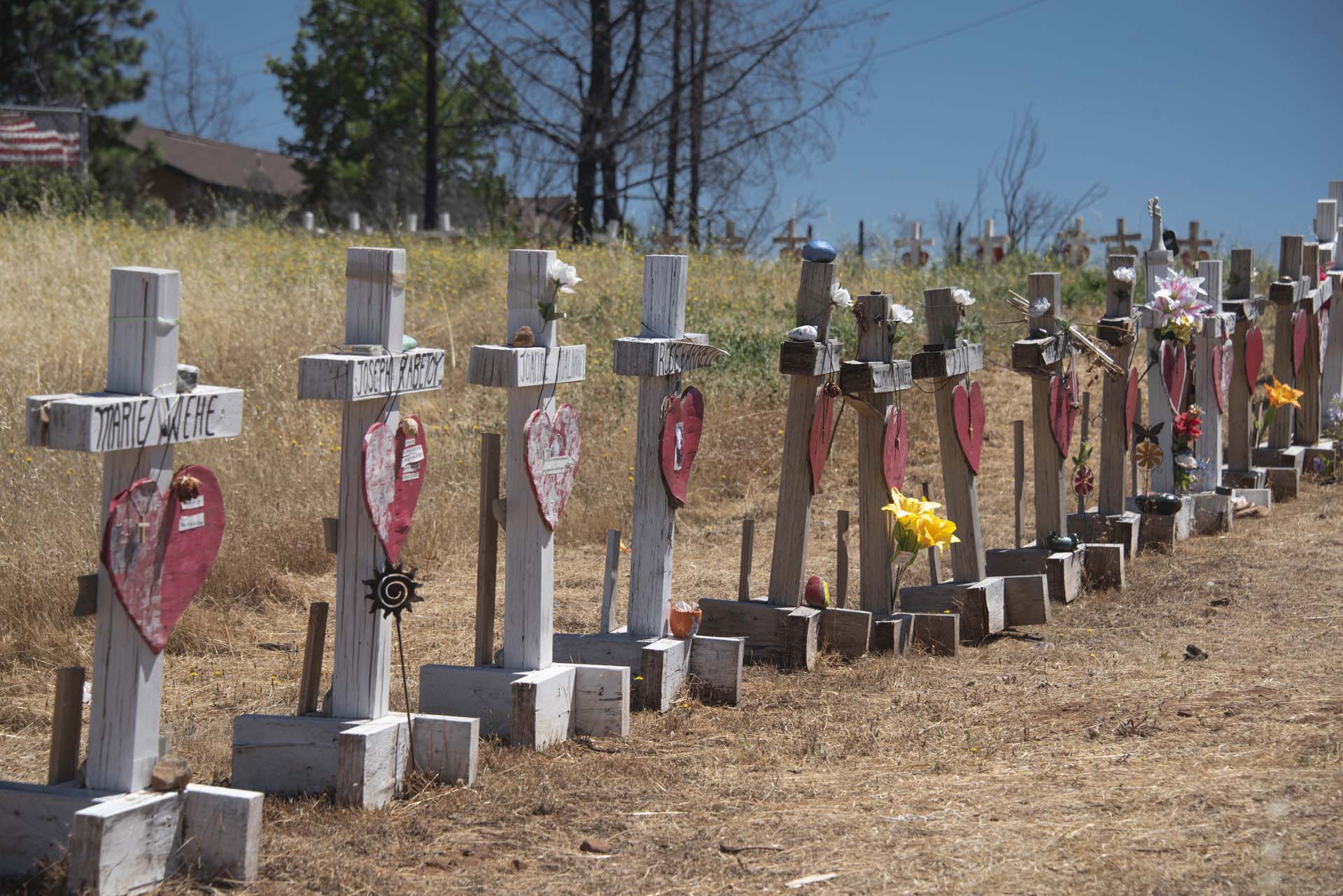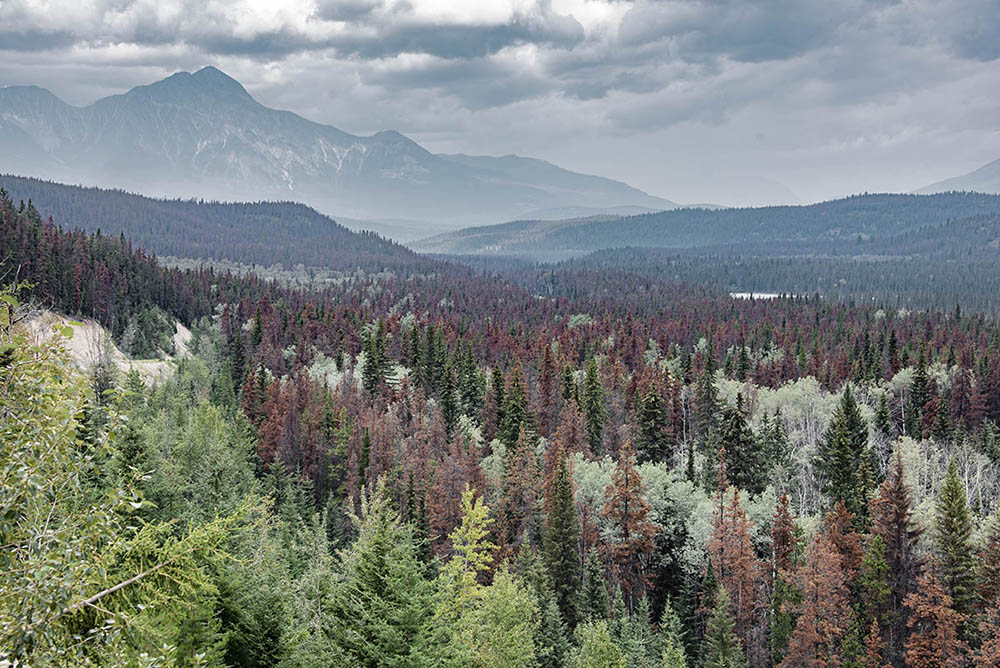
“Where do we move?” Retirees want to know where they can escape climate change impacts. Those seeking to give their kids the best life they can want to know. The folks from where I live in Austin want to get out of this infernal heat that has come to dominate our lives with 100-degree days increasing from 10.5 per year on average in the 20th century to 37 on average today, with 45 on average over the last 10 years and vastly more to come. The respiratory system challenged and fire weary want to escape the West Coast where fires are now burning more areas than in pre-European times, only CalFire alone spent $3.1 billion fighting fires in 2021 not counting the US Forest Services or local and regional firefighters. There are major problems with future climate predictions though, that make the answer to this problem clear.
Climate prediction is pretty standard with Intergovernmental Panel on Climate Change (IPCC) being the most important of the future climate assessments. The models they use do a really good job of predicting average warming, but averages never killed anybody, it’s the extremes that matter, and the models cannot accurate or robustly predict extremes or abrupt changes.
These models are nearly identical to the weather models we see on television and they generally are correct for the first several days to a week, then they generally cannot be relied upon.
All the models run within a given range, and when dozens or hundreds of models’ are averaged together, the range of results they create is our new climate. But they still can’t model the extremes, or abrupt changes. The feedbacks involved and the small scale resolution required are just not possible even with the best climate models today. Even more concerning, the models suffer from scenario bias.

A live oak in Central Texas with its leaves burned off by Winter Storm Uri in 2021; a climate change-caused polar vortex
collapse that resulted in about 1,000 excess deaths in texas with a near total collapse the Texas grid.
Scenarios only cover a certain set of future conditions and these conditions do not include abrupt changes, extreme weather and weather related events, and climate tipping. The scenarios do not consider Earth systems collapses when climate variables exceed their evolutionary boundaries, and they do not consider a warming target of less than 1.5 C or a restoration target. If we only study a warming target of 1.5 C, extremes increase nonlinearly and because extremes are really bad now, where does this leave us? We also don’t tell the models that tipping completes with any additional warming, so we don’t know what happens in the future, at best.
What we do know is that evolutionary boundaries that define tipping points were created by a global temperature that is cooler than today, and we know this because these boundaries are also identified as the natural variation of our old climate. (Today’s current warming is a bit more than 1.0 degrees C above normal, or 1.8 F.)
When these evolutionary boundaries are exceeded, our Earth’s systems collapse because the species that evolved to occupy those systems can no longer survive in the new hostile conditions. These evolutionary boundary collapses are directly related to climate tipping, that was not supposed to happen until 5 degrees C warming sometimes at 2100 or beyond, and that result in apocalyptic scenarios for humankind that we have all been warned of.

Paradise, California, after the Camp Fire that destroyed 14,000 homes in six hours in 2018.
Eighty five were killed (Calfire) or 106 (locals told me personally).
More than half of tipping systems are now active. These tipping collapses are things like ice sheet collapse, sea level rise, permafrost collapse, Gulf Stream collapse, arctic sea ice collapse, tropical forest collapse and high altitude and high latitude forest collapse. These tipping systems complete their collapses and most become irreversible — WITH NO FURTHER WARMING. Think of the pot of water on the stove. if we stop turning up the heat, the water still boils because the heat is still on. This is our climate. If we stop all emissions and magically halt warming in the pipeline, because these tipping thresholds have already been crossed; because these Earth systems are already in collapse, their collapses do not self-restore. They complete with irreversible and existential scenarios resulting.
Tipping is ecological collapse. This happens when an ecology passes through a threshold where it changes into something different. Similar things happen to biologic, physicals and hybrid biological/physical systems. The reason tipping is so dangerous is that collapse degrades, eliminates, or reverses the environmental services a system provides; like supplying us with raw materials and food, or oxygen generation, carbon dioxide removal, a stable sea level, tropical forests precipitation engines, stable rainfall for engineering systems designs; the list is long and important. Our advanced human civilization depends on these environmental services, literally for its existence. Without them, literally, our civilization will collapse.
Critically, the loss of carbon dioxide removal services of our Earth systems means they flip from greenhouse gas sequestration to emissions. These natural system feedbacks would make Mother Nature in control of our climate with emissions far exceeding the quantity of greenhouse gases emitted by humans.
We have been warned dystopian climate tipping would happen if we delayed climate action, and existential scenarios to our advanced human civilization would result, but the warnings were for the distant 100-year future. Lenton 2019 tells us half of tipping systems are now activated and they complete and mostly become irreversible with no further warming. This was not supposed to happen according to widespread and long-standing consensus opinion until 5 degrees C warming, and half of these already activated tipping systems have feedback relationships that increase the speed and intensity of other tipping systems.
Judicial planning might allow us to move somewhere the impacts aren’t so bad, but this is not the most critical thing about these tipping collapses that are now prematurely active 100 years ahead of schedule.
The most likely first global impact is global economic collapse, and no place is safe from global economic collapse. It will likely be caused by what climate scientists call simultaneity catastrophes. The ice bomb in Texas last year during Valentine’s week was a good example. The ice and snow froze up gas suppliers that knocked electrical generation offline and the freezing temperatures inside of houses caused water pipes to burst creating a mold catastrophe and the list goes on. Critically, the Texas grid came minutes from failing, where this kind of failure literally would have seen electrical equipment all across Texas explode, burn, and fail irrecoverably. It has been estimated that such a failure would takes months to repair. Texas is the tenth largest economy in the world and if they went down for months, a global economic collapse would occur.
 Native bark beetle kill in Jasper National Park, British Columbia. Beetle kill is helping to increase fire across the north American West. The light gray-green broad-leaved trees are impacted by leaf miner that do not kill, but so stress trees that after several years they die of other causes.
Native bark beetle kill in Jasper National Park, British Columbia. Beetle kill is helping to increase fire across the north American West. The light gray-green broad-leaved trees are impacted by leaf miner that do not kill, but so stress trees that after several years they die of other causes.
We all have seen the supply issues with covid, but covid did not take the 10th the largest economy in the world offline. as Texas is the 10th largest economy in the world. The disaster cost as much as Katrina and Harvey combined, and we are just getting started with impacts, and because the impacts will continue to become nonlinearly more extreme, once we pass through the economic collapse threshold we will have no opportunity for recovery because the impacts will continue to increase for many, many centuries.
Taking all this into consideration, there is no place safe. Global economic collapse would be all encompassing, with one exception. Small rural settlements where there is the capacity to grow your own food and tend to your own animals might work, but remote is likely key; and guns. Migration away from urban areas could all too likely be immense. If supply lines completely break down and there is no reason that a much larger stressor than covid would do this, famine will be massive in urban areas and migration to rural areas will be equally as massive.
When the economic collapse occurs, it will likely come on quite rapidly, like it did with covid. These sort of things are threshold events, exactly like tipping. A system can only absorb or buffer stressors up to a point, then all hell breaks loose.
The stressors of migration, climate extremes, infrastructure collapses, and supply chain issues, many of them as yet unknown like the Valentine’s week ice bomb in Texas, these stressors will increase until collapse occurs. Chaos will quickly result in dystopian situations from starvation and violence, migration forces and mortality. Migration will play a big role. Drought, catastrophe, sea level rise, flooding; all will create migration forces that increase over time and increase greatly during episodic situations. It is theses episodic situations that are troublesome. Scientists tell us the worst will occur during simultaneous episodic catastrophic events.
Metro populations have little ability to tend to themselves when infrastructures and supply chains go sideways. We know about infrastructure collapses in Austin from the ice bomb, but now because of covid, everybody knows about supply chain collapses. With global economic collapse, supply chains won’t just slow economies, they will evaporate them.
Covid is also definitively a climate change-caused event. Zoonosis, or animal to human disease transmission, is enhanced by habitat destruction, forcing more animals together with related stresses, allowing closer human contact with animals because humans are replacing the former habitats, and this is all compounded by warming stress in animals plus warming creates animal migrations that further compounds animal stress — all leading to greater animal disease that then transmits to humans.
Rural areas will be impacted by migration as folks flee metro areas because of economic collapse, infrastructure collapse and supply chain failures. There will be no place safe.
These are the future dystopian scenarios that were not supposed to happen until the year 2100 or thereabouts; that were not supposed to impact anyone but our grandchildren, and then only when tipping had come.
Now that tipping has prematurely activated, we know these dystopian scenarios come next. Because we cannot yet model the extremes with any robustness, we must use expert judgement to help us understand the future. It is this expert judgement that says simultaneous climate change-caused catastrophes will result in global economic collapse where there is no place safe from economic collapse.
The takeaway: You can run, but you can’t hide. If we do not restore the evolutionary boundaries of our old climate, before the point of not return that is very likely far sooner than the year 2100, already activated tipping 100 years ahead of projections will complete and become irreversible with existential scenarios for humankind. This all happens long before 2100 and the first existential impact to our advanced civilization will be irreversible economic collapse.
REFERENCES
Tipping
Lenton 2019 – More than half of known tipping points are now active up to 100 years ahead of projections… Nine Earth systems collapses have been identified by scientists as active: Arctic sea ice, Greenland ice sheet, boreal forests, permafrost, the Gulf Stream, the Amazon, coral, the West Antarctic Ice Sheet and parts of the East Antarctic Ice Sheet. Until 2018, the Intergovernmental Panel on Climate Change (IPCC) has assumed that tipping would not occur before 5 C of warming above preindustrial times, something that the worst-case scenario put well into the 22nd century. In 2018 however, IPCC lowered this limit to between 1 and 2 C above preindustrial times in both the 1.5 C Report and the Cryosphere Report. Lenton tells us, “The Intergovernmental Panel on Climate Change (IPCC) introduced the idea of tipping points two decades ago. At that time, these ‘large-scale discontinuities’ in the climate system were considered likely only if global warming exceeded 5 °C above pre-industrial levels. Information summarized in the two most recent IPCC Special Reports (published in 2018 and in September this year) suggests that tipping points could be exceeded even between 1 and 2 °C of warming.” Climate tipping is now active greater than 100 years ahead of projections.
Lenton et al., Climate tipping points-too risky to bet against, Nature, November 27, 2019
https://www.nature.com/articles/d41586-019-03595-0
University of Exeter Press –
http://www.exeter.ac.uk/news/featurednews/title_767753_en.html
Winter Storm Uri
20 million without power… At the peak of the storm, 69 percent of Texans, 20 million people, were without power… “More than two out of three (69%) Texans lost electrical power at some point February 14-20, for an average of 42 hours, during which they were without power on average for one single consecutive bloc of 31 hours, rather than for short rotating periods.” The Winter Storm of 2021, Hobby School of Public Affairs, University of Houston https://uh.edu/hobby/winter2021/st orm.pdf
Up to 978 people died in the Texas Ice Disaster in 2021… Buzzfeed conducted an excess deaths analysis for the ice disaster where they compared previous years total deaths to those during the disaster, with illness such as cardiovascular disease and diabetes. They found between 426 and 978 more people than expected died in Texas in the week ending February 20 alone. This work was reviewed by individuals at University of California at Berkeley, Virginia Commonwealth University, and University of Jerusalem.
Popular press article –
Aldhous et al., The Graveyard Doesn’t Lie – The Texas Winter Storm And Power Outages Killed Hundreds More People Than The State Says, May 26, 2021.
https://www.buzzfeednews.com/article/peteraldhous/texas-winter-storm-power-outage-death-toll
Technical Analysis – https://buzzfeednews.github.io/2021-05-tx-winter-storm-deaths/
162 hours below freezing at Mabry – https://www.timeanddate.com/weather/usa/austin/historic?month=2&year=2021
Cost of URI – $200 to $295 Billion, about as much as Katrina and Harvey combined… The Perryman Group is an economic research and analysis firm based in Waco, Texas, serving the needs of more than 2,500 clients, including two-thirds of the Global 25, over half of the Fortune 100, the 12 largest technology firms in the world, 10 US Cabinet Departments, the 9 largest firms in the US, the 6 largest energy companies operating in the US, and the 5 largest US banking institutions.
The Perryman Group – Preliminary Estimates of Economic Costs of the February 2021 Texas Winter Storm, February 2021.
https://www.perrymangroup.com/media/uploads/brief/perryman-preliminary-estimates-of-economic-costs-of-the-february-2021-texas-winter-storm-02-25-21.pdf
Most expensive disasters… Harvey $133.2 billion, Katrina $167.4 billion, total $300.6 billion.
https://en.wikipedia.org/wiki/List_of_disasters_by_cost#cite_note-200_billion-10
Texas Comptroller estimate of Uri’s damage at $80 to $130 billion…
https://comptroller.texas.gov/economy/fiscal-notes/2021/oct/winter-storm-impact.php#:~:text=Although%20Winter%20Storm%20Uri’s%20devastation,damage%20and%20forgone%20economic%20opportunities
Covid
Covid-19 and Climate Change… Habitat loss from human encroachment causes animal stress. Habitat loss from climate change causes animal stress. Changing habitat from habitat loss and migration from climate change causes stress. Increased animal numbers in smaller habitat areas causes stress. Warming causes stress. Stress allows greater amounts of disease. More humans and closer contact with animals increases the likelihood of zoonoses, or animal to human transmission of disease.
Zoonoses, Blurred Lines of Emergent Disease and Ecosystem Health, United Nations Environemntal Program, UNEP Frontlines Report, 2016.
https://wedocs.unep.org/bitstream/handle/20.500.11822/32060/zoonoses.pdf?sequence=1&isAllowed=y
Santos et al., Viruses in Food and Water, Chapter 20, Epidemiology, control, and prevention of emerging zoonotic viruses, Science Direct, Woodhead Publishing, 2013.
https://www.sciencedirect.com/science/article/pii/B9780857094308500204
Lenton, Covid, Ice Bomb
